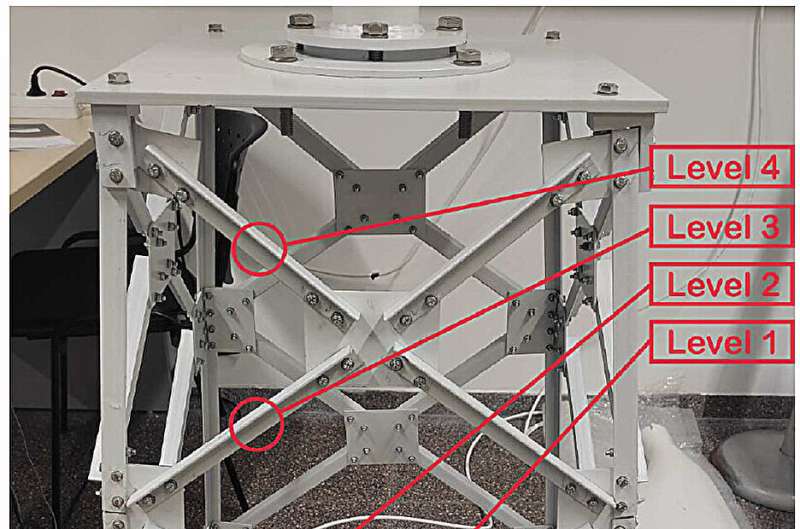
October 29, 2024 by Escuela Superior Politecnica del Litoral
Collected at: https://techxplore.com/news/2024-10-safe-power-early-loose-disasters.html
2023 was a record year for wind energy, with more than 1,051 gigawatts of installed capacity and generating 10% of the world’s electricity. This milestone marks a crucial step forward in the transition to a more sustainable future, by reducing dependence on fossil fuels and mitigating climate change.
However, the exponential growth and size of wind turbines, especially those located at sea, also pose new technical challenges. These structures, although solid, are exposed to extreme environmental conditions that generate constant vibrations, putting their structural stability at risk.
Wind energy in 2023: A year of growth and new challenges. Wind energy is playing a crucial role in the global energy transition. In 2023, installed capacity exceeded 1,051 gigawatts, allowing 10% of the world’s electricity to come from this renewable source.
Wind turbines, especially those installed at sea, are affected by factors such as wind, sea currents and variations in mechanical loads that generate intense vibrations. These vibrations can cause the bolts holding the structure to loosen over time, putting the stability of the turbine at risk and potentially leading to catastrophic failures.
Faced with this challenge, it is vital to have advanced monitoring technologies that allow these problems to be detected in time and preventive maintenance to be carried out, avoiding major damage and significant repair costs.
Advanced technology to protect our turbines. This study developed an innovative methodology that uses principal component analysis (PCA) and Mahalanobis distance to detect early on whether the bolts holding the structure of a wind turbine together are beginning to loosen due to vibrations.
PCA is a dimensionality reduction technique that transforms vibration data into principal components, making it easier to identify subtle changes in structural behavior. On the other hand, Mahalanobis distance measures the deviation of the current data from a reference model based on the healthy state of the turbine, allowing anomalies to be detected with high precision.
To validate this methodology, experiments were performed on a scale model of a wind turbine, subjected to different bolt loosening conditions. Vibration sensors were used to capture detailed data, which were transformed using PCA. The measurements were then compared to the healthy state using the Mahalanobis distance.
The work was published in the journal Structural Health Monitoring.
The result was early detection of bolt loosening with an accuracy of over 95% in most cases. This demonstrates that the technique can identify problems at early stages, before they develop into serious failures.
What is most innovative about this approach is that it does not require previous failure data to work. Relying solely on data from a healthy state, this methodology is particularly useful in offshore turbines, where structural failures are difficult to record.

Impact and benefits
Implementing this methodology in wind turbines would significantly improve operational safety and efficiency. Instead of relying on costly and often inaccurate visual inspections, operators can receive early warnings based on objective data. This not only increases turbine safety, but also reduces operating costs by minimizing downtime and the risks of unexpected failures.
In a world where renewable energy is key to a sustainable future, ensuring the continuous and efficient operation of wind turbines is critical. This research offers an advanced technological solution that protects investments in wind energy and ensures clean and reliable electricity generation.
In summary, this study conducted by researchers from universities in Ecuador and the Universitat Politécnica de Catalunya demonstrates that the combination of techniques such as PCA and Mahalanobis distance can offer a robust solution for structural monitoring of wind turbines. This not only helps prevent failures, but also optimizes maintenance, making the operation more efficient and efficient.
More information: Rhandall Valdez et al, Bolt-loosening detection in offshore wind turbines’ jacket-type supports, Structural Health Monitoring (2024). DOI: 10.1177/14759217241268522

Leave a Reply